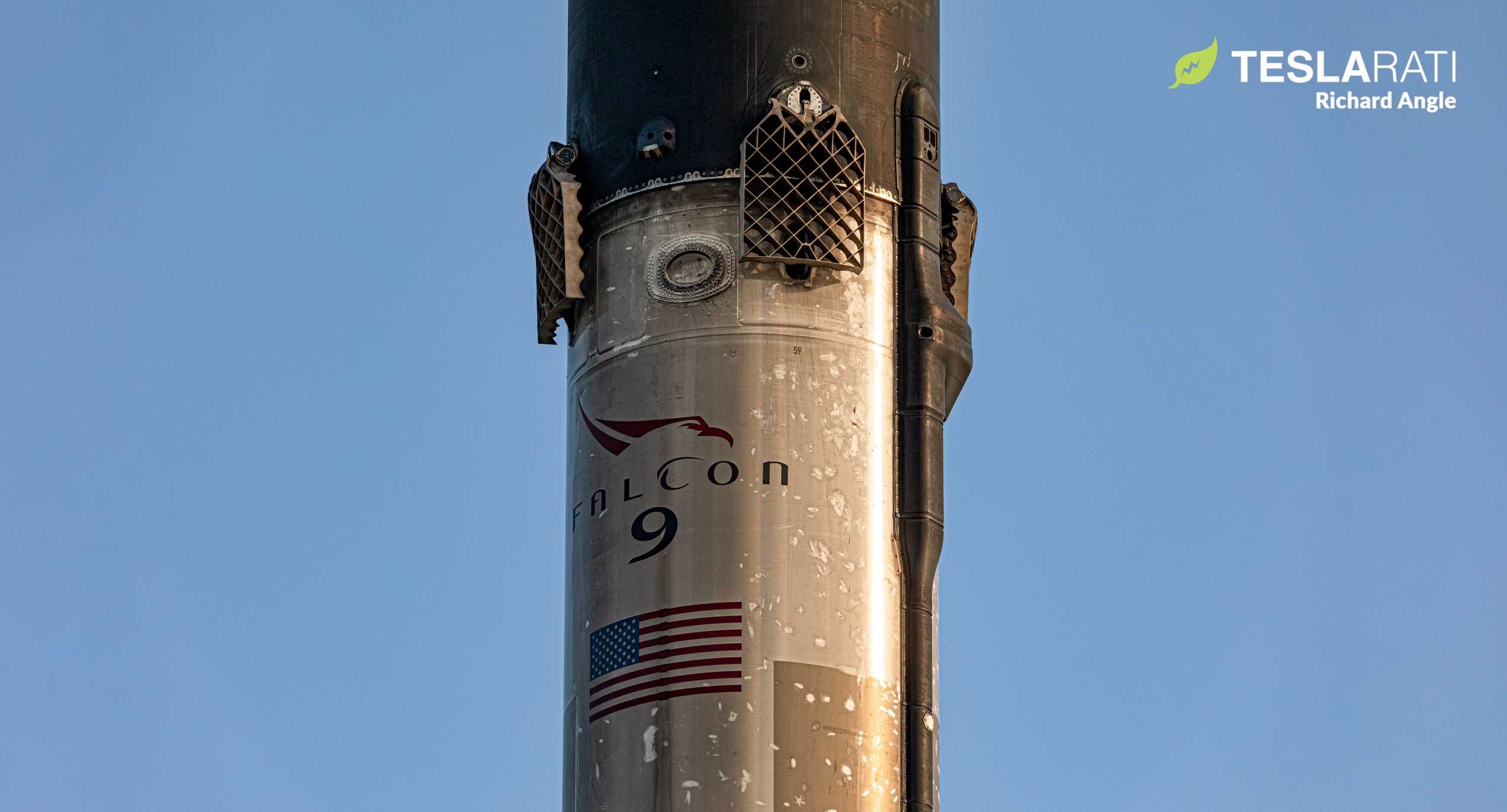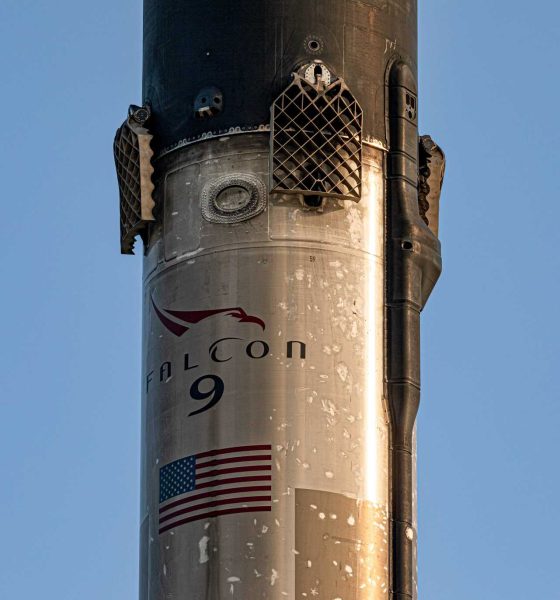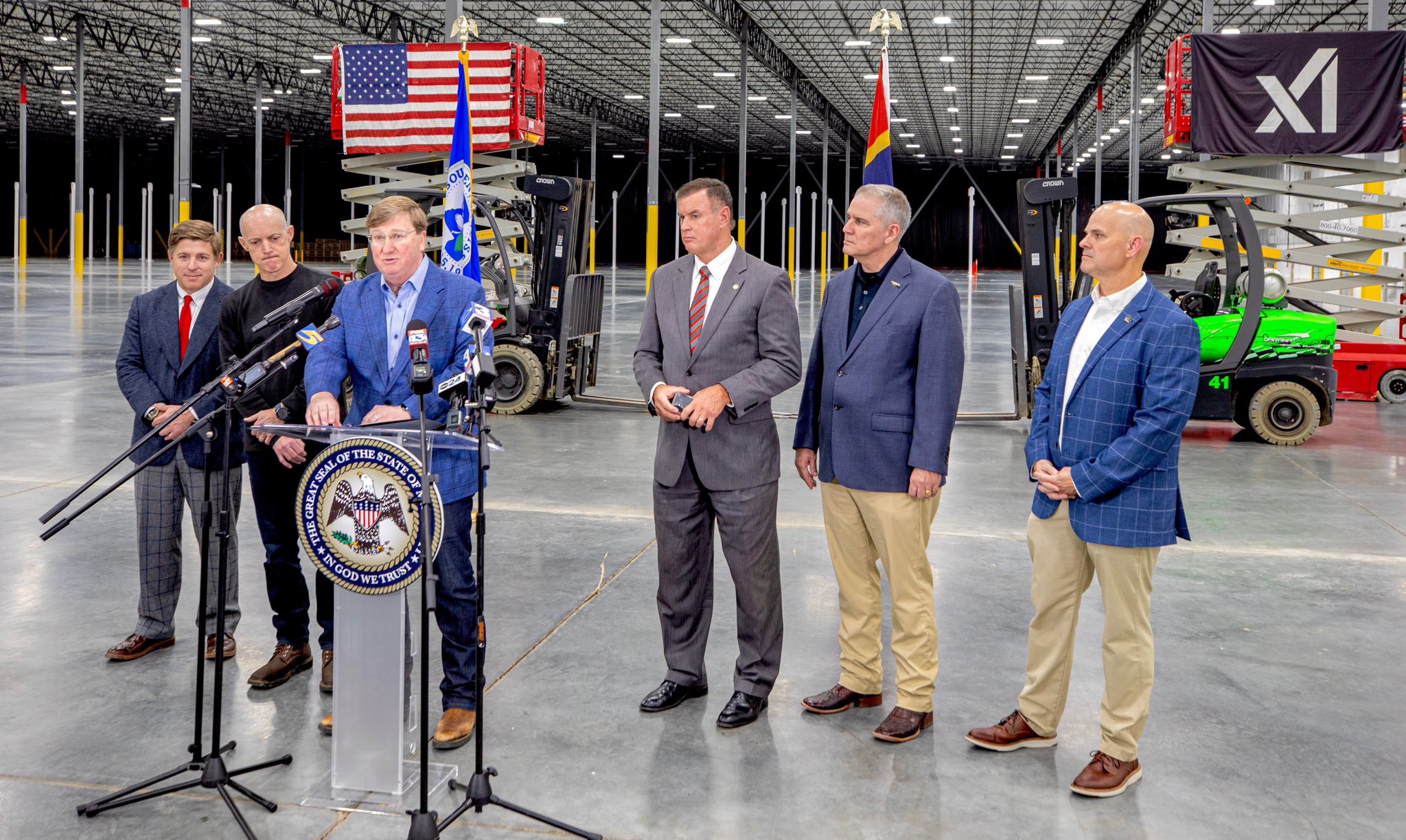

News
SpaceX grapples with failed Falcon 9 landing as Starlink launches slip
The follow-on effects of SpaceX’s failed February 15th booster landing have begun to roll in, triggering at least one to two weeks of delays for several upcoming Starlink launches.
Already delayed a few days and leapfrogging an even more beleaguered Starlink-17 launch originally scheduled as far back as late January, SpaceX Falcon 9 booster B1059 lifted off for the sixth time without issue last Monday. The rocket seemed to perform fine, separating as planned around 150 seconds after launch and leaving Falcon 9’s expendable upper stage to continue on its way to orbit with a ~16-ton (~35,000 lb) batch of 60 Starlink satellites.
During B1059’s “reentry burn,” a period where Falcon boosters reignite three of their Merlin 1D engines to both slow down and create a sort of shield with the rocket exhaust that burn produces, something went wrong. Unusual sparks quite literally flew during and after the last few seconds of the burn and the bright flare produced by Falcon 9’s engines dissipated far slower than usual. Eventually, when B1059 was expected to fire up for one final landing burn, all that was visible from a live camera on SpaceX’s drone ship was two flashes of warm light.
It’s hard to say for sure without an official comment from SpaceX but those flashes may have been the drone ship camera capturing the mid-air breakup and fast-fire (or explosion) of the Falcon 9 booster some 20-30 seconds before a planned soft landing. The odd behavior observed during and after the reentry burn could have also indicated a partial loss of thrust in one or more of B1059’s three reentry engines.
Unofficial analysis of the telemetry data included in SpaceX’s public webcasts more or less aligns with that theory, suggesting that Falcon 9 B1059 reentry burn lasted a nominal duration but didn’t slow the rocket down as much as it should have. As a result, B1059 would have been traveling faster and at a lower altitude relative to a nominal Starlink mission, which is exactly what’s observed in a comparison between Starlink-18 and Starlink-19, virtually identical launches completed 11 days apart.
That same telemetry also suggests that Falcon 9 B1059 may have lost thrust before its first burn completed, possibly explaining why the timing of launch events on SpaceX’s webcast and an official SpaceX.com launch timeline began to drastically diverge after MECO. MECO itself occurred about five seconds behind that schedule, gradually ballooning to a difference of more than half a minute for Starlink satellite deployment an hour after launch.
That observation increases the similarity between Starlink-5 and Starlink-19, both of which seemingly suffered a boost phase anomaly, off-nominal reentry burn performance, and booster loss well before landing. SpaceX’s Starlink-5 engine-out anomaly and failed booster landing grounded the company for about five weeks before it eventually returned to flight on April 22nd, 2020.
SpaceX appears to be working to mitigate the impact from Starlink-19 but a delay of at least 1-2 weeks is in order based on current schedules. Perhaps the most chronically delayed SpaceX launch of all time, Starlink-17 – originally scheduled to fly as early as “Jan. 29, Jan. 30, Jan. 31, Feb. 1, Feb. 2, Feb. 4, Feb. 5, Feb. 7, Feb. 17,” and Feb. 25 – is now on the calendar for no earlier than (NET) February 28th. Starlink-20, planned to launch in the last week of February, has been tentatively pushed to no earlier than March 7th. Both dates are assuredly subject – and likely – to change as SpaceX works to close out its Starlink-19 anomaly investigation and implement any necessary changes.

News
Tesla Model Y Standard Long Range RWD launches in Europe
The update was announced by Tesla Europe & Middle East in a post on its official social media account on X.

Tesla has expanded the Model Y lineup in Europe with the introduction of the Standard Long Range RWD variant, which offers an impressive 657 km of WLTP range.
The update was announced by Tesla Europe & Middle East in a post on its official social media account on X.
Model Y Standard Long Range RWD Details
Tesla Europe & Middle East highlighted some of the Model Y Standard Long Range RWD’s most notable specs, from its 657 km of WLTP range to its 2,118 liters of cargo volume. More importantly, Tesla also noted that the newly released variant only consumes 12.7 kWh per 100 km, making it the most efficient Model Y to date.
The Model Y Standard provides a lower entry point for consumers who wish to enter the Tesla ecosystem at the lowest possible price. While the Model 3 Standard is still more affordable, some consumers might prefer the Model Y Standard due to its larger size and crossover form factor. The fact that the Model Y Standard is equipped with Tesla’s AI4 computer also makes it ready for FSD’s eventual rollout to the region.
Top Gear’s Model Y Standard review
Top Gear‘s recent review of the Tesla Model Y Standard highlighted some of the vehicle’s most notable features, such as its impressive real-world range, stellar infotainment system, and spacious interior. As per the publication, the Model Y Standard still retains a lot of what makes Tesla’s vehicles well-rounded, even if it’s been equipped with a simplified interior.
Top Gear compared the Model Y Standard to its rivals in the same segment. “The introduction of the Standard trim brings the Model Y in line with the entry price of most of its closest competition. In fact, it’s actually cheaper than a Peugeot e-3008 and costs £5k less than an entry-level Audi Q4 e-tron. It also makes the Ford Mustang Mach-E look a little short with its higher entry price and worse range,” the publication wrote.
Elon Musk
Elon Musk’s xAI bets $20B on Mississippi with 2GW AI data center project
The project is expected to create hundreds of permanent jobs, dramatically expand xAI’s computing capacity, and further cement the Mid-South as a growing hub for AI infrastructure.

Elon Musk’s xAI plans to pour more than $20 billion into a massive new data center campus in Southaven, Mississippi, marking the largest single economic development project in the state’s history.
The project is expected to create hundreds of permanent jobs, dramatically expand xAI’s computing capacity, and further cement the Mid-South as a growing hub for AI infrastructure.
xAI goes MACROHARDRR in Mississippi
xAI has acquired and is retrofitting an existing facility in Southaven to serve as a new data center, which will be known as “MACROHARDRR.” The site sits near a recently acquired power plant and close to one of xAI’s existing data centers in Tennessee, creating a regional cluster designed to support large-scale AI training and inference.
Once completed, the Southaven facility is expected to push the company’s total computing capacity to nearly 2 GW, placing it among the most powerful AI compute installations globally. The data center is scheduled to begin operations in February 2026.
Gov. Tate Reeves shared his optimism about the project in a press release. “This record-shattering $20 billion investment is an amazing start to what is sure to be another incredible year for economic development in Mississippi. Today, Elon Musk is bringing xAI to DeSoto County, a project that will transform the region and bring amazing opportunities to its residents for generations. This is the largest economic development project in Mississippi’s history,” he said.
xAI’s broader AI ambitions
To secure the investment, the Mississippi Development Authority approved xAI for its Data Center Incentive program, which provides sales and use tax exemptions on eligible computing hardware and software. The City of Southaven and DeSoto County are also supporting the project through fee-in-lieu agreements aimed at accelerating development timelines and reducing upfront costs.
Founded in 2023 by Elon Musk, xAI develops advanced artificial intelligence systems focused on large-scale reasoning and generative applications. Its flagship product, Grok, is integrated with the social media platform X, alongside a growing suite of APIs for image generation, voice, and autonomous agents, including offerings tailored for government use.
Elon Musk highlighted xAi’s growth and momentum in a comment about the matter. “xAI is scaling at an immeasurable pace — we are building our third massive data center in the greater Memphis area. MACROHARDRR pushes our Colossus training compute to ~2GW – by far the most powerful AI system on Earth. This is insane execution speed by xAI and the state of Mississippi. We are grateful to Governor Reeves for his support of building xAI at warp speed,” Musk said.
Elon Musk
Tesla AI Head says future FSD feature has already partially shipped

Tesla’s Head of AI, Ashok Elluswamy, says that something that was expected with version 14.3 of the company’s Full Self-Driving platform has already partially shipped with the current build of version 14.2.
Tesla and CEO Elon Musk have teased on several occasions that reasoning will be a big piece of future Full Self-Driving builds, helping bring forth the “sentient” narrative that the company has pushed for these more advanced FSD versions.
Back in October on the Q3 Earnings Call, Musk said:
“With reasoning, it’s literally going to think about which parking spot to pick. It’ll drop you off at the entrance of the store, then go find a parking spot. It’s going to spot empty spots much better than a human. It’s going to use reasoning to solve things.”
Musk said in the same month:
“By v14.3, your car will feel like it is sentient.”
Amazingly, Tesla Full Self-Driving v14.2.2.2, which is the most recent iteration released, is very close to this sentient feeling. However, there are more things that need to be improved, and logic appears to be in the future plans to help with decision-making in general, alongside other refinements and features.
On Thursday evening, Elluswamy revealed that some of the reasoning features have already been rolled out, confirming that it has been added to navigation route changes during construction, as well as with parking options.
He added that “more and more reasoning will ship in Q1.”
🚨 Tesla’s Ashok Elluswamy reveals Nav decisions when encountering construction and parking options contain “some elements of reasoning”
More uses of reasoning will be shipped later this quarter, a big tidbit of info as we wait v14.3 https://t.co/jty8llgsKM
— TESLARATI (@Teslarati) January 9, 2026
Interestingly, parking improvements were hinted at being added in the initial rollout of v14.2 several months ago. These had not rolled out to vehicles quite yet, as they were listed under the future improvements portion of the release notes, but it appears things have already started to make their way to cars in a limited fashion.
Tesla Full Self-Driving v14.2 – Full Review, the Good and the Bad
As reasoning is more involved in more of the Full Self-Driving suite, it is likely we will see cars make better decisions in terms of routing and navigation, which is a big complaint of many owners (including me).
Additionally, the operation as a whole should be smoother and more comfortable to owners, which is hard to believe considering how good it is already. Nevertheless, there are absolutely improvements that need to be made before Tesla can introduce completely unsupervised FSD.








